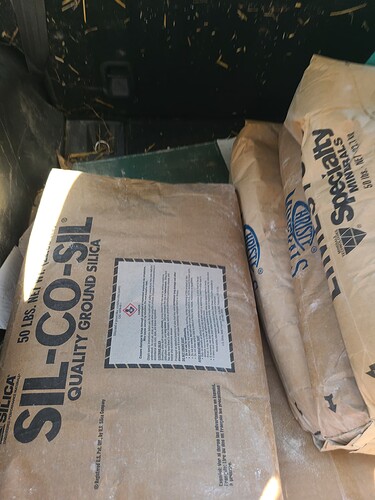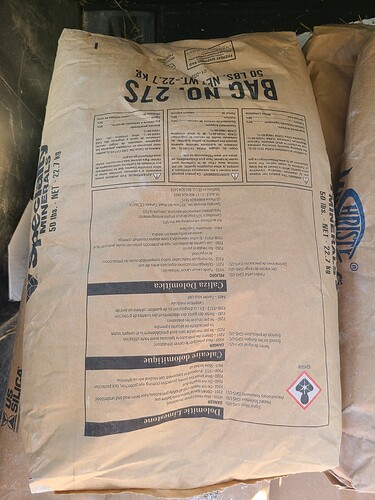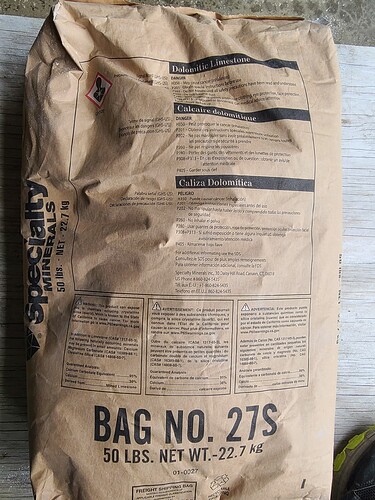For the high temp mortar mix our local pottery store had fireclay, silica sand, and lime. The lime wasnt called hydrated lime but after some online research it seemed like the same thing. Anyways, do these work?
I’m going to defer to @BrickWood on this question, Aaron. He is the absolute last word on these matters. I’ve flagged him on the post.
ok, sorry about my picture quality. I can take others if these don’t work. I’m not too worried about the fireclay I got from them because they said other people have stopped in the get fireclay for pizza oven mortar. It was called Hawthorn 40 mesh.
Here is a better photo of the lime. It says “Dolomite Limestone” and is from Specialty Minerals company.
After a quick review - I’m going to side w/ caution on this and say you should return the Dolmite Limestone and purchase Hydrated Lime. On a project of this size / undertaking - this is not the time to experiment with materials (even if a sales rep at the masonry store said to use it). It’s NOT worth the possibility of failure over a $10 bag of hydrated lime… a material that has been used in thousands of BrickWood Ovens over the years - with ZERO issues.
Dolomite limestone and hydrated lime are related but not exactly similar substances:
- Dolomite limestone: This is a sedimentary rock composed primarily of calcium magnesium carbonate (CaMg(CO3)2). It forms through the replacement of calcium ions in limestone with magnesium ions over geological time. Dolomite limestone is used in construction, agriculture, and industry, primarily as a source of calcium and magnesium.
- Hydrated lime: Also known as calcium hydroxide (Ca(OH)2), hydrated lime is created by reacting quicklime (calcium oxide, CaO) with water. This process produces a fine powder. Hydrated lime is used in various applications such as water treatment, construction, and chemical processes. It is known for its ability to neutralize acids and to provide calcium in a water-soluble form.
Key Differences:
- Composition: Dolomite limestone contains calcium magnesium carbonate, while hydrated lime is primarily calcium hydroxide.
- Formation: Dolomite limestone forms through geological processes over time, whereas hydrated lime is a manufactured product produced by adding water to quicklime.
- Use Cases: They have different applications. Dolomite limestone is used primarily as a source of calcium and magnesium in various industries. Hydrated lime is used for its chemical properties, including as a flocculant in water treatment, in construction for mortar and plaster, and in agriculture to neutralize acidic soils.
In summary, while both dolomite limestone and hydrated lime are related to calcium compounds and have various industrial uses, they are distinct substances with different compositions and applications.
Ok, thank you for taking the time to research this!


